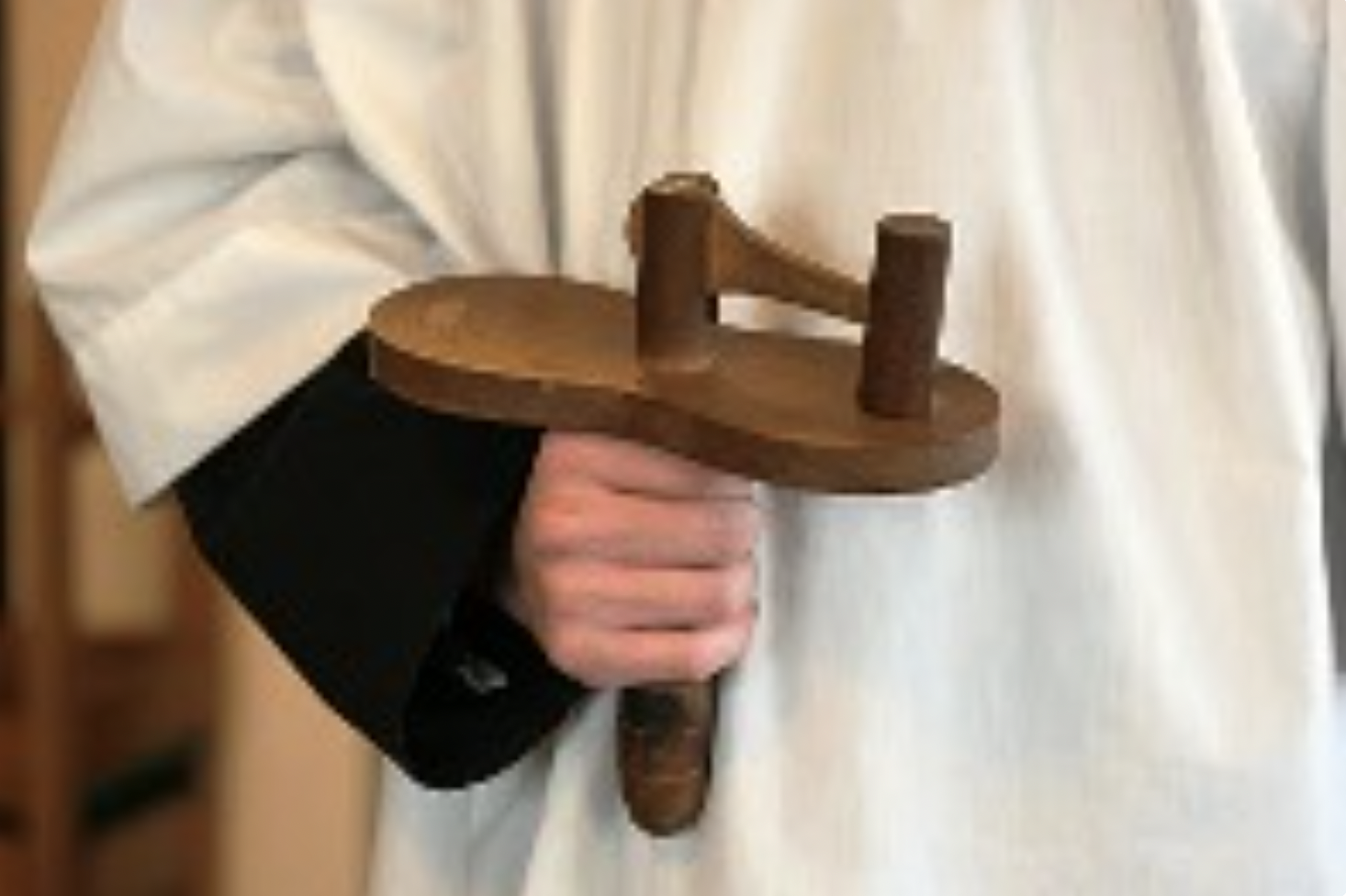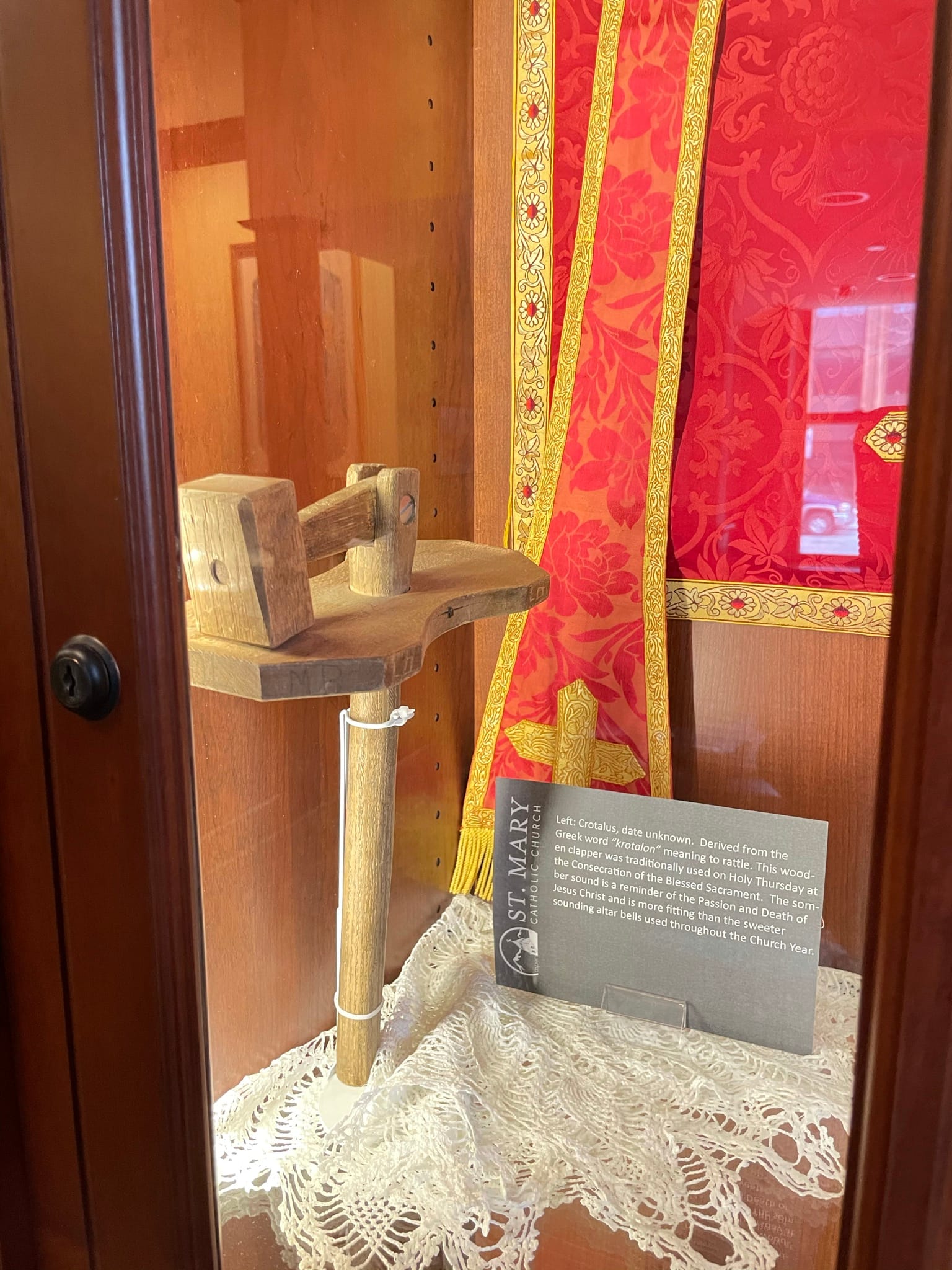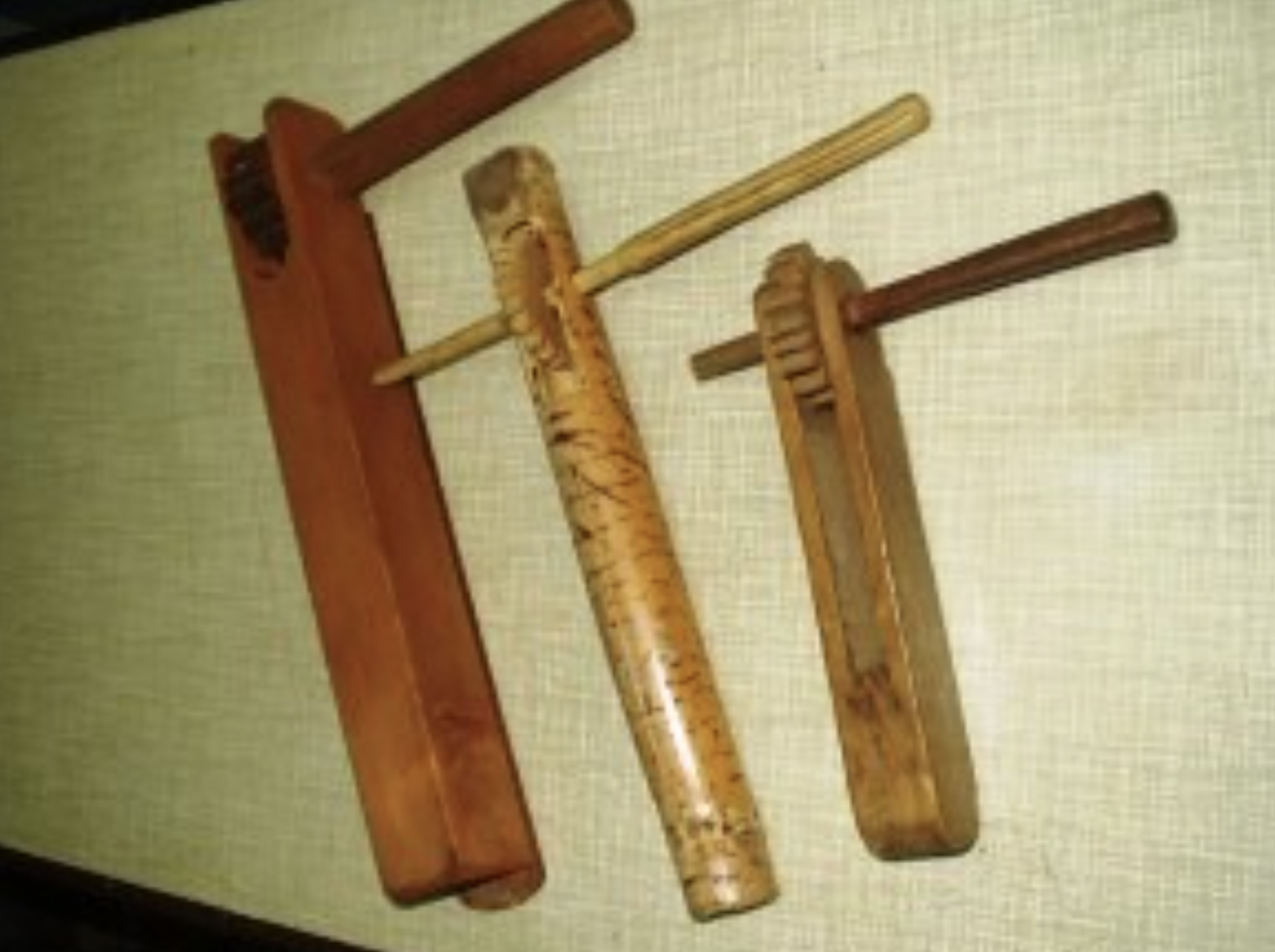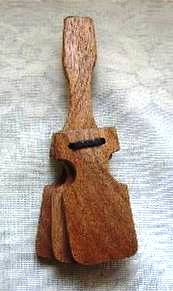Does your parish use the crotalus during Lent?
What is the crotalus in Catholic Liturgy? Here’s an explanation:
Throughout the Lenten season, parishes can use the crotalus as a replacement for the bells during the liturgy.
The Church’s liturgical rubrics don’t prescribe a replacement for altar bells, but there is a long-standing tradition of using a wooden clapper or noise-maker in its place.
This serves to mark the same events as the altar bells, but in a less “sweet” way, and thus, maintains the somber tone.
According to the Catholic Encyclopedia and the old Latin Rite, the Church did not ring the altar bells “from the end of the ‘Gloria in excelsis’ on Maundy Thursday to the beginning of the ‘Gloria in excelsis’ on Holy Saturday. During this interval the Memoriale Rituum (Tit. iv, sec. 4, n. 7) prescribed that the clapper (crotalus) be used to give the signal for the Angelus, but it is nowhere prescribed in the liturgical functions.”
However, this changed post-Vatican II. We now ring the altar bells beginning on Holy Thursday.
The term “crotalus” is a Latin term that comes from the Greek word “krotalon” (κροταλον), which means “rattle.” (As a result, “crotalus” is also the name of a genus of rattlesnakes.) Crotaluses can come in many different designs (see the pictures and videos at the end of this article for examples).
The crotalus was universally used but fell out of use in the last few decades. It seems, however, to have made a comeback due to an increase of interest in traditional liturgy.
Here is an example of the crotalus being used during Holy Thursday Mass:
Here are additional photos of the crotalus:





